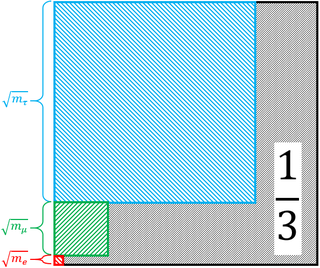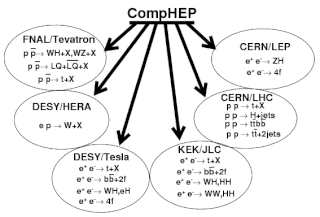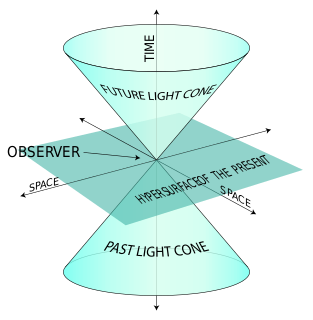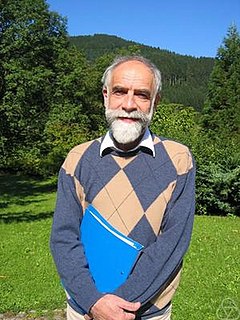The Les Houches Accords are agreements between particle physicists to standardize the interface between the matrix element programs and the event generators used to calculate different quantities. The original accord was initially formed in 2001, at a conference in Les Houches, France, and was subsequently expanded.
In experimental high energy physics, several levels of computing are used to simulate data runs, including programs that generate matrix elements and ones that generate events. However, there are several programs for each of these tasks, such as CompHEP and MadGraph to generate matrix elements, and PYTHIA and HERWIG for event generation. Depending on specific properties of the particle decay that physicists are interested in, they may desire to use a certain program for these tasks, but before the Les Houches Accords, there was no general interface for communicating between the programs. This enables physicists to choose more freely between different programs. The Accords also make it easier to generate parton distribution functions, which are datasets used to calculate cross sections, for events.
The original Accord defined a programmatic interface for transfer of event information, in terms of Fortran common blocks, but no data exchange file format was defined until 2006. Events that conform to the formats described in the Les Houches Accords are said to be in Les Houches Event format, or more often, LHE format.
M-theory is a theory in physics that unifies all consistent versions of superstring theory. Edward Witten first conjectured the existence of such a theory at a string theory conference at the University of Southern California in 1995. Witten's announcement initiated a flurry of research activity known as the second superstring revolution. Prior to Witten's announcement, string theorists had identified five versions of superstring theory. Although these theories initially appeared to be very different, work by many physicists showed that the theories were related in intricate and nontrivial ways. Physicists found that apparently distinct theories could be unified by mathematical transformations called S-duality and T-duality. Witten's conjecture was based in part on the existence of these dualities and in part on the relationship of the string theories to a field theory called eleven-dimensional supergravity.
In physics, string theory is a theoretical framework in which the point-like particles of particle physics are replaced by one-dimensional objects called strings. String theory describes how these strings propagate through space and interact with each other. On distance scales larger than the string scale, a string looks just like an ordinary particle, with its mass, charge, and other properties determined by the vibrational state of the string. In string theory, one of the many vibrational states of the string corresponds to the graviton, a quantum mechanical particle that carries the gravitational force. Thus, string theory is a theory of quantum gravity.
In a supersymmetric theory the equations for force and the equations for matter are identical. In theoretical and mathematical physics, any theory with this property has the principle of supersymmetry (SUSY). Dozens of supersymmetric theories exist. Supersymmetry is a spacetime symmetry between two basic classes of particles: bosons, which have an integer-valued spin and follow Bose–Einstein statistics, and fermions, which have a half-integer-valued spin and follow Fermi–Dirac statistics. In supersymmetry, each particle from one class would have an associated particle in the other, known as its superpartner, the spin of which differs by a half-integer. For example, if the electron exists in a supersymmetric theory, then there would be a particle called a "selectron", a bosonic partner of the electron. In the simplest supersymmetry theories, with perfectly "unbroken" supersymmetry, each pair of superpartners would share the same mass and internal quantum numbers besides spin. More complex supersymmetry theories have a spontaneously broken symmetry, allowing superpartners to differ in mass.
In physics, the pomeron is a Regge trajectory — a family of particles with increasing spin — postulated in 1961 to explain the slowly rising cross section of hadronic collisions at high energies. It is named after Isaak Pomeranchuk.
In particle physics, a generation or family is a division of the elementary particles. Between generations, particles differ by their flavour quantum number and mass, but their electric and strong interactions are identical.

DONUT was an experiment at Fermilab dedicated to the search for tau neutrino interactions. The detector operated during a few months in the summer of 1997, and successfully detected the tau neutrino. It confirmed the existence of the last lepton predicted by the Standard Model. The data from the experiment was also used to put an upper limit on the tau neutrino magnetic moment and measure its interaction cross section.
Event generators are software libraries that generate simulated high-energy particle physics events. They randomly generate events as those produced in particle accelerators, collider experiments or the early universe. Events come in different types called processes as discussed in the Automatic calculation of particle interaction or decay article.
In particle physics, the parton model is a model of hadrons, such as protons and neutrons, proposed by Richard Feynman. It is useful for interpreting the cascades of radiation produced from quantum chromodynamics (QCD) processes and interactions in high-energy particle collisions.

Physics beyond the Standard Model (BSM) refers to the theoretical developments needed to explain the deficiencies of the Standard Model, such as the inability to explain the fundamental parameters of the standard model, the strong CP problem, neutrino oscillations, matter–antimatter asymmetry, and the nature of dark matter and dark energy. Another problem lies within the mathematical framework of the Standard Model itself: the Standard Model is inconsistent with that of general relativity, and one or both theories break down under certain conditions, such as spacetime singularities like the Big Bang and black hole event horizons.

The Koide formula is an unexplained empirical equation discovered by Yoshio Koide in 1981. In its original form, it relates the masses of the three charged leptons; later authors have extended the relation to neutrinos, quarks, and other families of particles.
PYTHIA is a computer simulation program for particle collisions at very high energies in particle accelerators.

CompHEP is a software package for automatic computations in high energy physics from Lagrangians to collision events or particle decays.
Computational particle physics refers to the methods and computing tools developed in and used by particle physics research. Like computational chemistry or computational biology, it is, for particle physics both a specific branch and an interdisciplinary field relying on computer science, theoretical and experimental particle physics and mathematics. The main fields of computational particle physics are: lattice field theory, automatic calculation of particle interaction or decay and event generators.
The automatic calculation of particle interaction or decay is part of the computational particle physics branch. It refers to computing tools that help calculating the complex particle interactions as studied in high-energy physics, astroparticle physics and cosmology. The goal of the automation is to handle the full sequence of calculations in an automatic (programmed) way: from the Lagrangian expression describing the physics model up to the cross-sections values and to the event generator software.

The light-front quantization of quantum field theories provides a useful alternative to ordinary equal-time quantization. In particular, it can lead to a relativistic description of bound systems in terms of quantum-mechanical wave functions. The quantization is based on the choice of light-front coordinates, where plays the role of time and the corresponding spatial coordinate is . Here, is the ordinary time, is one Cartesian coordinate, and is the speed of light. The other two Cartesian coordinates, and , are untouched and often called transverse or perpendicular, denoted by symbols of the type . The choice of the frame of reference where the time and -axis are defined can be left unspecified in an exactly soluble relativistic theory, but in practical calculations some choices may be more suitable than others.
In particle physics, W′ and Z′ bosons refer to hypothetical gauge bosons that arise from extensions of the electroweak symmetry of the Standard Model. They are named in analogy with the Standard Model W and Z bosons.

Jürg Martin Fröhlich is a Swiss mathematician and theoretical physicist. He is best known for introducing rigorous techniques for the analysis of statistical mechanics models, in particular continuous symmetry breaking, and for pioneering the study of topological phases of matter using low-energy effective field theories.

Cadabra is a computer algebra system designed specifically for the solution of problems encountered in classical field theory, quantum field theory and string theory.

In theoretical particle physics, the gluon field is a four-vector field characterizing the propagation of gluons in the strong interaction between quarks. It plays the same role in quantum chromodynamics as the electromagnetic four-potential in quantum electrodynamics – the gluon field constructs the gluon field strength tensor.
Jean Zinn-Justin is a French theoretical physicist.







